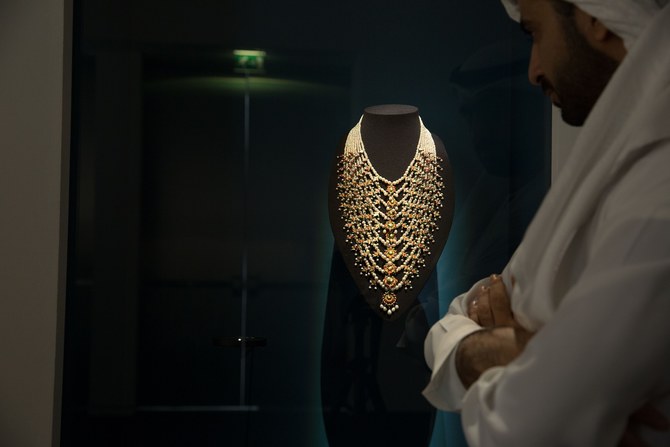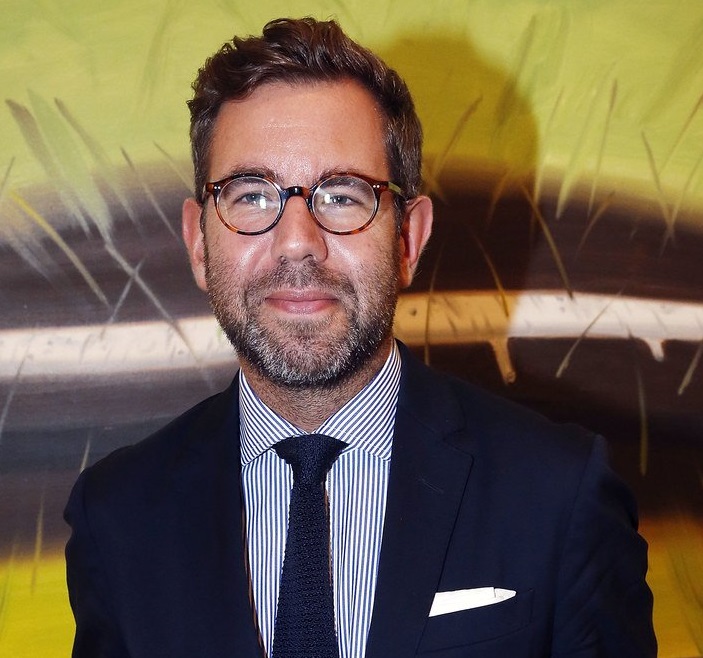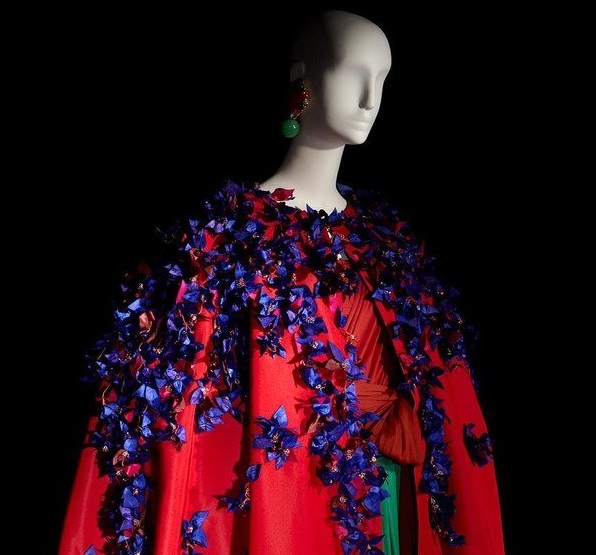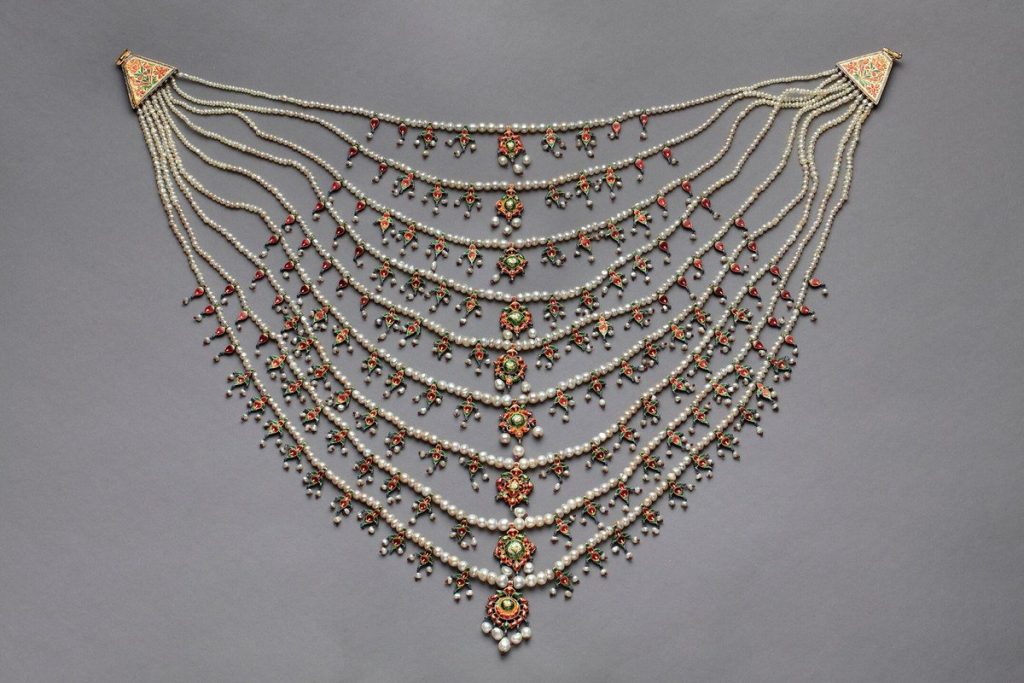







Rawaa Talass, Abu Dhabi
“10,000 Years of Luxury” — the Louvre Abu Dhabi’s eighth and latest exhibition — sheds light on how the multidimensional notion of luxury transformed overtime, from the ancient to the modern era, stretching from the Americas to the Far East. It runs until February 18.
Based on a universal theme that is being explored on a grand scale for the first time in the Middle East, it is a fascinating presentation of 350 sumptuous items of art, jewelry, fashion, tableware, and furniture, all on loan from renowned international museums, design and fashion houses, including the collection of the Louvre Abu Dhabi.
“In today’s world, luxury is, of course, everywhere,” Olivier Gabet, the director of Paris’ Musée des Arts décoratifs and the exhibition’s curator, said during a press preview. “I saw luxury when I left Paris yesterday and I saw luxury when I arrived in Abu Dhabi yesterday, as well. It’s a notion that shapes our world. I think that museums are always about knowledge, enjoyment, sharing — but also giving people clues to understand the world they live in.”
As the exhibition proves, the beauty of luxury lies in its contrasting nature. It represents different things to different people. It can be miniscule and monumental, simple and elaborate, tangible and abstract, personal and public. Above all, it is an emblem of sophistication, exclusivity, connoisseurship, and the highest level of craftsmanship.
A “dialogue between civilizations” is how the curator describes the contents of the show, which is spread across 12 rooms. Naturally, given the region’s rich history in the production of diverse forms of art, many of the showcased objects — particularly the older ones — hail from the Middle East.
In fact, as soon as one enters the dimly lit show, a glimpse of Abu Dhabi’s history is on view through an exciting recent find on Abu Dhabi’s Marwah Island — the world’s oldest pearl. It is 8,000 years old and less than one centimeter in size. Pearl diving was a dangerous but lucrative trade, which was a mainstay of the UAE’s economy, pre-oil. Aside from its rarity, the size of the pale pink beauty is what makes it precious. As Gabet aptly put it: “Small is beautiful, always.”
Next to the tiny pearl is a bedazzling, nine-strand, Indian-designed pearl necklace from the late 1800s, formerly belonging to the iconic Egyptian singer Umm Kulthum. The story goes that the UAE’s founding father, Sheikh Zayed bin Sultan Al-Nahyan, gifted this piece of jewelry to the singer when she visited the Emirates in the early 1970s.
From Greater Syria, there is a beautiful selection of ancient earrings, pendants, bands, and pearls — extracted from the coastal city of Ugarit (known today as Ras Shamra), which was a hotspot for metallurgy during ancient times. These little scraps of gold — a material regarded as the ‘flesh of the Gods’ in the eyes of the Ancient Egyptians — represent what is known as ‘funerary jewelry,’ which was likely placed in tombs to accompany the deceased to the afterlife.
The dexterous artisans of Egypt were famed for their refined skills in the visual and textile arts, and the exhibition includes a massive Mamluk wool carpet from the late 15th century, embellished with intricate geometric patterns. In another room, a voluptuous enameled mosque lamp is inscribed with a dedication to the Mamluk ruler Sultan Baybars II, who likely commissioned the piece.
In the more-modern sections of the exhibition, haute couture becomes dominant, with dresses from the popular Lebanese designers Elie Saab and Rabih Kayrouz, and Tunisia’s Azzedine Alaia on display.
Gabet made note of an elegant silk cape from 1989, created by the French fashion designer Yves Saint Laurent, which, Gabet claimed, paid homage to Laurent’s country of birth, Morocco. On its back is sewn a fluttering layer of small, purple and red pieces of ribbed fabric — reminiscent of the boisterous bougainvillea flowers found in the streets of Morocco.
“Behind these important names, you have thousands and thousands of people working every day to master a craft or a skill,” said Gabet. “I think that this exhibition is not just about the superficial ideas people have about luxury, but also an homage to human creativity.”